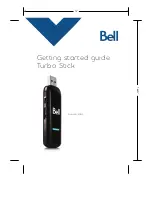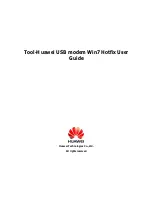
3
iO1000 Detailed Service Manual - OVERVIEW
Figure 2. iDEN TDM Format
Note that
Rx
(outbound) indicates base-to subscriber transmissions;
Tx
(inbound)
indicates subscriber-to-base transmissions. The slots are paired and have a fixed
offset of 19 milliseconds; their timings are synchronized by the iDEN system. The
TDMA technique requires sophisticated algorithms and one digital-signal proces-
sor (DSP) to perform voice compression/decompression and RF modulation/
demodulation.
Voice Compression Technology
Voice is converted into a digital bit stream by sampling the voice signal at a high
rate and converting the samples into numbers, which are represented by bits. A
sample consists of eight bits. Approximately 8,000 samples per second (64 kbps)
are required to maintain a reasonable quality.
Voice compression
reduces the number of bits per second while maintaining the
voice at an acceptable quality level. The iDEN system uses a coding technique
called
Vector Sum Excited Linear Prediction (VSELP)
to compress voice to 4.2 or
8.0 kbps. The compressed voice-data bits modulate the RF signal. The compres-
sion rate is based on the type of call (dispatch or interconnect) and the network
configuration established by the local service provider.
15ms
15ms
15ms
15ms
15ms
15ms
15ms
15ms
15ms
15ms
15ms
15ms
15ms
15ms
90ms
90ms
15ms
15ms
15ms
15ms
15ms
15ms
15ms
15ms
15ms
15ms
15ms
15ms
15ms
90ms
90ms
Tx
Rx
Receiver 4ms delayed
Transmitting 6 of 6 slots continually.
15ms
15ms
15ms
15ms
15ms
15ms
15ms
15ms
15ms
15ms
15ms
15ms
15ms
15ms
90ms
90ms
15ms
15ms
15ms
15ms
15ms
15ms
15ms
15ms
15ms
15ms
15ms
15ms
15ms
90ms
90ms
Rx
Tx
Transmitter 4ms delayed
When turned on, scans for control station, then transmits one slot every six slots.
Base Station Control Channel
Portable Unit












































